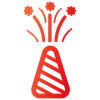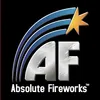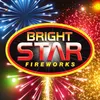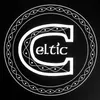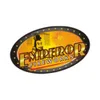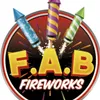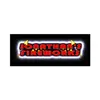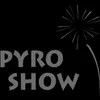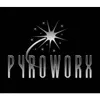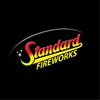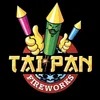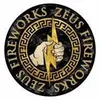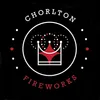25 Facts about Fireworks to Make you Sound like a Pro
At Chorlton Fireworks we know a thing or two about pyrotechnics. After all, we are the leading fireworks retailer in the North West. We’ve put together this list of fun, surprising, and unusual fireworks facts that can be casually dropped into conversation to impress your guests on Fireworks Night.

1. Fireworks were originally ceremonial
In ancient China when fireworks were first created they weren’t used to mark celebrations. Instead fireworks were used as part of spiritual ceremonies and rituals. Even earlier than this, bamboo ‘firecrackers’ were used to ward off evil spritis with loud noises, a tradition that still occurs on Chinese New Year today.
2. Fireworks were invented ‘by accident’
In fact, fireworks weren’t even created for spiritual ceremonies in the first place. Legend has it that a cook in ancient China invented the earliest form of a firework when he accidentally mixed three ingredients commonly found in the kitchen at that time: potassium nitrate (saltpetre, used for curing meats), charcoal, and sulphur, setting light to the mixture. The resultant sparks, colours, and effects began the journey to the firework we know today.
3. Early fireworks were bamboo stems
People in ancient China would throw them into a fire to produce a loud bang and a small explosion. Later, paper cylinders were filled with gunpowder to minim the same effect.
4. The most expensive firework display was £10,000,000
The most expensive display on record was held in honour of the 50th anniversary of the ratification of Kuwait’s Constitution. The display encompassed a massive 77,282 fireworks.
5. Fireworks gave way to explosive weaponry
Many people think fireworks were invented as an afterthought to gunpowder, but actually, it was the other way round. English scholar Roger Bacon discovered gunpowder when he identified saltpetre as the explosive element of a firework. He wrote his findings in code to delay the discovery leading to more violent warfare. Find out more about the invention of fireworks in our blog.
6. Fireworks made their debut in the UK at a royal wedding
King Henry VII and Elizabeth of York celebrated their marriage in 1486 with a medieval firework display, the first of its kind in the United Kingdom. Today, wedding fireworks are a popular, exciting addition to many wedding receptions.
7. The ‘Fire Master of England’ is the royal fireworks maker
Fireworks continued to be enjoyed by the royal family in England after Henry VIII’s wedding, particularly by Queen Elizabeth I, who appointed a royal position for the best fireworks maker in the land: the Fire Master of England.
8. The largest firework display ever consisted of 810,904 fireworks
Created by the Iglesia Ni Cristo in the Philippines, the 2016 New Year firework show was the largest ever recorded, lasting for longer than one hour.
9. The Houses of Parliament are still checked for explosives
Every November, before the state opening, the houses of parliament are checked by the Yeomen of the Guard for concealed explosives or terrorists. Although this is more of a custom than a serious precaution now as more stringent anti-terrorism measures are in place
10. Sparklers burn at a fierce 1,000°C to 1,600°C
The combustible materials and metal that make up sparklers mean they can burn much hotter than a naked flame and can cause a serious burn if not used correctly.

11. Fireworks are responsible for the expression ‘damp squib’
A squib is a cylindrical paper explosive with a fuse that acts as a sort of firework. Get one damp and it fails to ignite and go off hence the expression which is used to describe something of disappointing results.
12. Refusing to celebrate bonfire night was once illega
Until 1959, it was against the law in the UK for anyone to refrain from marking the historical day. The only establishment that was excused was St Peter’s School in York, where Guy Fawkes was a pupil.
13. Roman candle fireworks are of a gruesome origin
Or at least their name is. When Nero was emperor of ancient Rome, Christians were blamed for the cause, and lack of adequate response to, the Great Fire of Rome. As punishment, the emperor had Christians tied to the top of tall stakes in the palace gardens and coated with various flammable substances like oil and pitch, then set alight. Today the Roman candle firework is a lot less horrific!

14. The Catherine wheel also has a ghastly namesake
The Catherine wheel firework also has its name origin in violence. The firework is named after Saint Catherine of Alexandria who was sentenced to death by ‘breaking on the wheel’, a painful death whereby the accused has their bones broken by force with a wooden spoked wheel. When Saint Catherine touched the wheel it broke into pieces.

15. Disney is the largest consumer of fireworks in the world
The Walt Disney company spend an incredible $50 million each year on fireworks for the multiple displays it curates at Disneyland resorts around the world.

16. Fireworks are known as ‘hanabi’ in Japanese
Which means ‘fire flower’. They are also known as ‘havai fişek’ in Turkish meaning ‘air cracker’.
17. Fireworks aren’t legal everywhere
In fact, Ireland, Argentina, Australia, Chile, and Colombia have banned their sale to the general public entirely. People misusing fireworks and trying to create dangerous homemade fireworks lead to tougher restrictions on their sale to stop people from being put at risk of harm.
18. Fireworks weren’t always so colourful
In the beginning, they only consisted of orange and while sparks and flame, after fireworks were brought to Europe Italians began to experiment with them, adding different chemicals like chlorates of barium, copper, strontium, and sodium lead to different coloured effects. Now fireworks are available in a huge spectrum of colours.
https://media.giphy.com/media/0sHN7N0blPly2pGAHQ/giphy.gif
19. Vibrant deep blue is the hardest colour to achieve when making fireworks
Despite years of experimenting, pyrotechnicians have not yet been able to recreate this colour.
20. Kovtapyroergasoiphobia
The name given to an irrational fear of fireworks.
21. Elvis held an annual firework war
Not something anyone would get away with today, Elvis loved fireworks and held an annual firework game called ‘War’ in which two teams would fire fireworks at one another from either side of the prairie behind Graceland. Players were known to don “flight suits, racing helmets, goggles and rags” to protect themselves from the explosives.
22. Fireworks debuted in America on July the 4th 1777
In the Pennsylvania Evening Post they were described as “ a grand exhibition of fireworks (which began and concluded with thirteen rockets) on the Commons, and the city was beautifully illuminated.” They became a permanent fixture of Independence Day from then on.
23. Fireworks can change colour mid-air
Stars that explode out from the main effect of a firework can be coated in multiple layers of different metals salts so when one layer is burned through a new colour appears.
24. The largest single firework weighed almost three tonnes
Launched in February 2020 the largest firework ever created shot up at a speed of 300 miles per hour for Colorado’s Winter Carnival.
25. Fireworks aren’t only used to celebrate New Year’s Eve
In addition to Fireworks Night, Chinese New Year, and Independence Day, fireworks are enjoyed on Diwali and in France to celebrate Bastille Day.
350 Barlow Moor Rd
Chorlton
Manchester, M21 8AZ
07810 222123
info@chorltonfireworks.com












